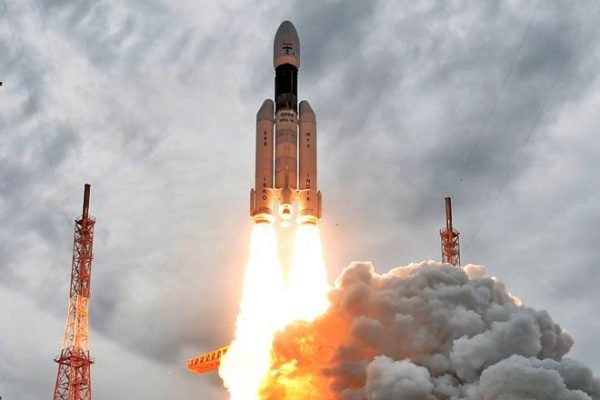In a massive leap for the world in terms of lunar studies, Chandrayaan – 2, the brainchild of the Indian Space Research Organization (ISRO), took flight successfully on 22 July 2019 from the Satish Dhawan Space Centre in Sriharikota. Chadrayaan is a combination of two Hindi words – ‘chandra’, meaning moon, and ‘yaan’, meaning vehicle.
The mission was launched into orbit by Geosynchronous Satellite Launch Vehicle Mark III or GSLV Mark-III, the heaviest and most powerful rocket built by ISRO. It is scheduled to make a landing on the moon on 7th September to explore the south polar region of the moon, a region that has not been explored by any nation in the world before.
Chairman of ISRO K. Sivan applauded the efforts of all the members associated the project. Indian President Ramnath Kovind and Prime Minister Narendra Modi also congratulated the team on the stupendous feat.
Special moments that will be etched in the annals of our glorious history!
The launch of #Chandrayaan2 illustrates the prowess of our scientists and the determination of 130 crore Indians to scale new frontiers of science.
Every Indian is immensely proud today! pic.twitter.com/v1ETFneij0
— Narendra Modi (@narendramodi) July 22, 2019
The launch was also hailed by global media including NASA.
Congrats to @ISRO on the launch of Chandrayaan 2, a mission to study the Moon. We’re proud to support your mission comms using our Deep Space Network and look forward to what you learn about the lunar South pole where we will send astronauts on our #Artemis mission in a few years pic.twitter.com/dOcWBX3kOE
— NASA (@NASA) July 22, 2019
The Chandrayaan – 2 mission will study the topography of the moon by means of its lander ‘Vikram,’ named after the Dr Vikram Sarabhai, the father of the Indian Space Program. The name of the rover that will be placed on the moon is ‘Pragyaan,’ which will study the moon’s surface for a duration of 1 lunar day, equal to 14 Earth days.
This home-grown mission of ISRO has been at a shoestring budget of $1.8 billion, causing it to be lauded across the world.
Once successful, India will become the fourth nation in the world to reach the surface of the moon after the United States of America, Russia, and China.
Scientific Objectives of Chandrayaan – 2
Chandrayaan – 2 will be India’s first space mission to conduct a soft landing on the moon’s surface. This is being launched more than a decade after India’s first mission to the moon – Chandrayaan – 1, which discovered traces of water on the moon.
Chandrayaan – 2 is a follow on mission to Chandrayaan – 1 and seeks to trace more information about the origin and evolution of the moon by studying its surface. According to the ISRO website, the south polar region of the moon also has craters that are cold traps, which contain fossilised records of the early Solar System.
Hence, this mission will help us gain more information about the origin and evolution of the moon and the Solar System.
All eyes now are on 7th September, when the mission will make a soft landing on the moon. Here is wishing team ISRO the best for a smooth and successful mission!
0